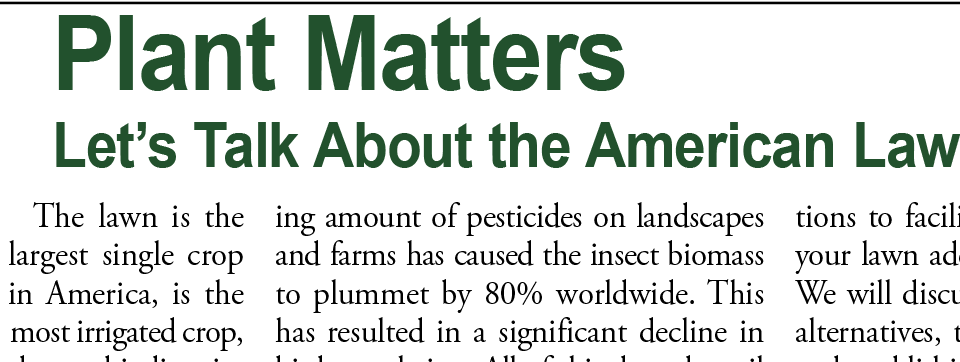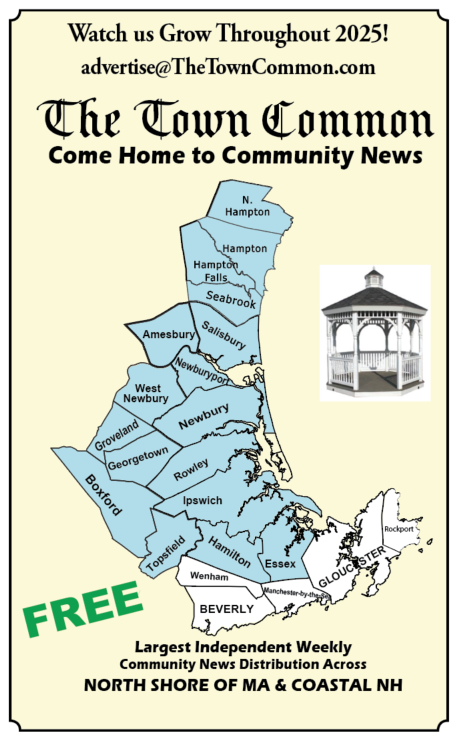
The lawn is the largest single crop in America, is the most irrigated crop, and is a complete and utter biodiversity desert.
“Lawns significantly degrade the ecological health of land and water and contribute to global warming.” – Owen Wormser
Here are some statistics for your consideration:
- Americans use approximately 100 million tons of fertilizers on lawns each year.
- Two tons of Carbon Dioxide (CO2) are produced for each ton of fertilizer manufactured.
- Increased fertilizer usage has been linked to increased atmospheric Nitrous Oxide
- Farmers are typically blamed for polluting waters with agricultural chemicals, but homeowners use up to 10 times more chemicals per acre than farmers according to The US Fish and Wildlife Service.
A consequence of using an increasing amount of pesticides on landscapes and farms has caused the insect biomass to plummet by 80% worldwide. This has resulted in a significant decline in bird population. All of this degrades soil health and biology. Soil is an essential living system that supports plant communities, natural systems, and water quality.
Mowing is a major source of pollution. Just filling lawn mowers with gasoline accounts for 17 million gallons of gasoline spillage per year. The noise and air pollution generated from gasoline powered mowers, blowers, and weed whackers is becoming so annoying that some cities are banning them. Unfortunately, mow blow and go is the business model of choice for the simpleton lawn jockey. Consequently, lawns and their maintenance emit four times the carbon dioxide that is sequestered by the lawn crop and, therefore, lawns contribute to global warming.
It is estimated that Americans spend $40 Billion on lawns annually. So, what can we do about this ecological calamity? We will explore alternatives and solutions to facilitate the withdrawal from your lawn addiction in future columns. We will discuss organic methods, lawn alternatives, transitioning to meadows, and establishing trees and shrubs in lawn areas with the goal of creating more sustainable local landscapes.
Recommended Reading:
Lawns To Meadows – Owen Wormser. ♦
Ida Wye is the principal of Ida Wye Designs, offering landscape design, consultation, implementation, and restoration. Ida was green long before it was fashionable. She is committed to creating gardens that heal our planet, one landscape at a time. Ida graduated from U. Mass. Amherst with a B. S. in Plant and Soil Sciences before working for the U.S. D. A. and teaching Horticulture. After studying Landscape Design at Radcliffe, she began working independently. She later studied Urban Forestry and Wetland Science. www.idawyelandscapes.com




